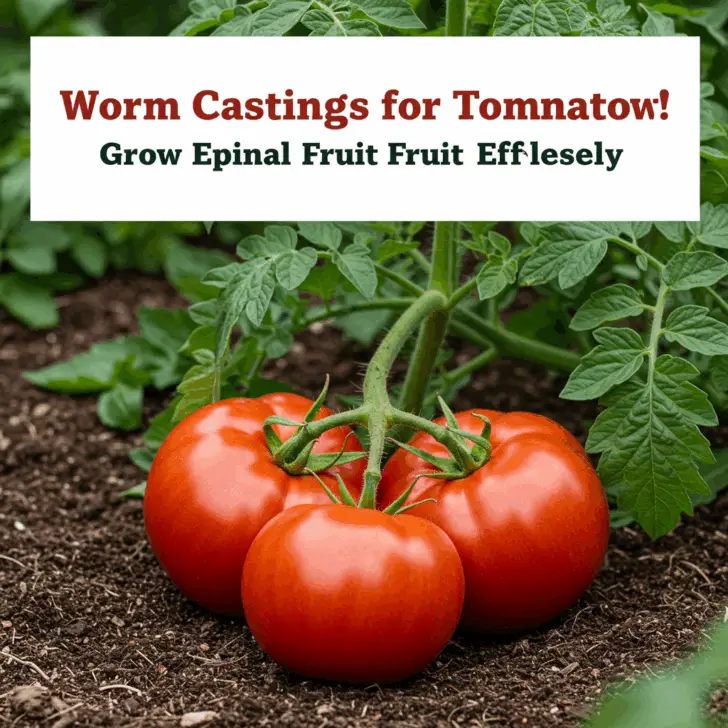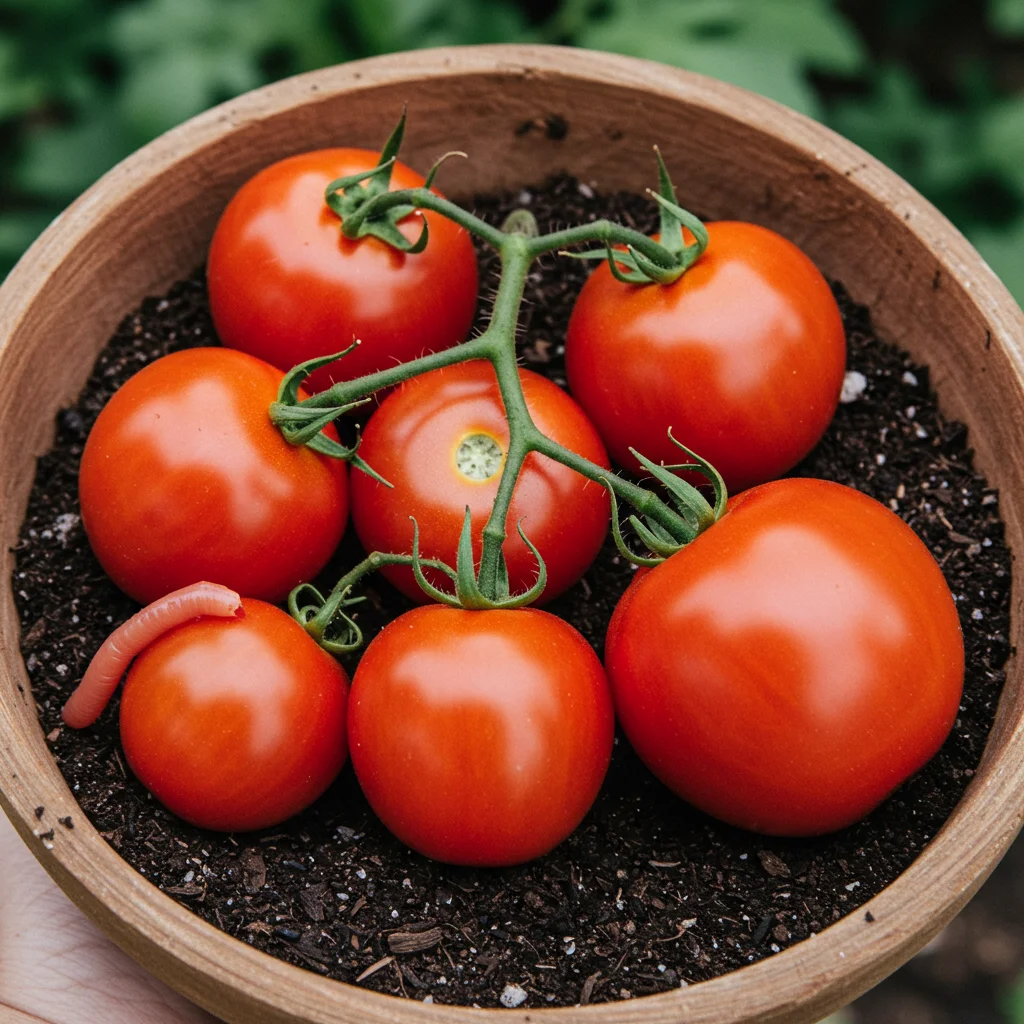also known as vermicast, are an organic gardener’s secret weapon for growing thriving tomato plants. This comprehensive guide explores the benefits of using worm castings for tomatoes, how to apply them effectively, and answers frequently asked questions to help you maximize your harvest.
Harness the power of worm castings to boost your tomato yield. This guide provides a comprehensive look at the benefits, application methods, and FAQs of using this organic fertilizer for healthier, more productive tomato plants.
Introduction:
Tomatoes, a garden favorite, require nutrient-rich soil to reach their full potential. While chemical fertilizers offer a quick fix, they can disrupt the delicate balance of the soil ecosystem. Worm castings, a natural and sustainable alternative, provide a slow-release source of essential nutrients, improve soil structure, and promote beneficial microbial activity, leading to healthier and more productive tomato plants.
JUMP TO TOPIC
The Benefits of Worm Castings for Tomatoes
Worm castings are packed with essential nutrients that tomatoes crave, including nitrogen, phosphorus, potassium, calcium, and magnesium. Beyond providing these crucial elements, worm castings offer several other benefits:
- Improved Soil Structure: Worm castings enhance soil aeration and drainage, creating a more favorable environment for root development. This allows the tomato plants to access water and nutrients more efficiently.
- Enhanced Nutrient Availability: The nutrients in worm castings are readily available to plants, unlike some synthetic fertilizers that need to be broken down first.
- Increased Disease Resistance: Beneficial microbes present in worm castings help suppress soilborne diseases that can affect tomatoes.
- Boosted Growth and Yield: The combined benefits of improved soil structure, nutrient availability, and disease resistance result in healthier, more vigorous tomato plants capable of producing a larger and higher-quality yield.
- Environmentally Friendly: As a natural and organic product, worm castings are a sustainable alternative to chemical fertilizers, promoting healthy soil and minimizing environmental impact.
How to Use Worm Castings for Tomatoes
There are several ways to incorporate worm castings into your tomato-growing routine:
1. Pre-Planting Soil Amendment:
- Mix worm castings into the soil before transplanting your tomato seedlings. A general recommendation is to add 1-2 cups of worm castings per planting hole or mix about 1 part worm castings with 3 parts soil for raised beds or containers. This provides a nutrient-rich foundation for strong growth.
2. Top Dressing:
- Sprinkle a handful of worm castings around the base of your tomato plants every few weeks during the growing season. Gently work the castings into the top inch of soil. This provides a continuous supply of nutrients as the plants grow and produce fruit.
3. Worm Castings Tea:
- Create a “tea” by steeping worm castings in water for 24-48 hours. This liquid fertilizer can be applied directly to the leaves and roots of your tomato plants, providing a quick boost of nutrients and beneficial microbes. You can learn more about creating compost tea on our Compost Tea Guide. (Example of an automated internal link)
Different Types of Worm Castings
While all worm castings offer significant benefits, slight differences exist depending on the worm species used and the feeding materials:
- Red Wiggler (Eisenia fetida) Castings: This is the most common type of worm casting, known for its rich nutrient content and beneficial microbes.
- African Nightcrawler (Eudrilus eugeniae) Castings: These castings are known for their excellent soil aeration properties and are often used in heavier clay soils. Find more information on different types of worms at Worm Farming HQ. (Example of an external link)
Troubleshooting with Worm Castings
Although worm castings are remarkably beneficial, it’s important to use them correctly:
- Over-fertilization: While rare, excessive use of worm castings can lead to nutrient imbalances. Stick to the recommended application rates for optimal results.
- Mold: If your worm castings develop mold, it indicates excessive moisture. Allow them to dry out before using.
FAQs: Worm Castings for Tomato Plants
Q: Where can I buy worm castings?
A: Worm castings can be purchased from garden centers, nurseries, online retailers, or directly from worm farms.
Q: Can I use worm castings with other fertilizers?
A: Yes, worm castings can be used in conjunction with other organic fertilizers. However, avoid combining them with chemical fertilizers, which can harm the beneficial microbes in the castings.
Q: How often should I apply worm castings?
A: Applying worm castings as a top dressing every 2-4 weeks during the growing season or as a soil amendment at planting time is generally sufficient.
Q: Can I make my own worm castings?
A: Yes, you can create your own worm composting system (vermicomposting). Find a good vermicomposting guide to learn the basics.
Q: How long do worm castings last in the soil?
A: The nutrients in worm castings are released slowly over time, providing benefits to your plants throughout the growing season.
Conclusion
Incorporating worm castings into your tomato gardening practices offers a range of benefits, leading to healthier plants, improved soil quality, and increased yields. From boosting nutrient levels to promoting disease resistance, worm castings empower your tomato plants to thrive. By following the guidelines outlined in this guide and addressing common concerns, you can leverage the power of worm castings to cultivate a bountiful and successful tomato harvest. So, embrace this natural and sustainable approach to gardening and watch your tomato plants flourish!

